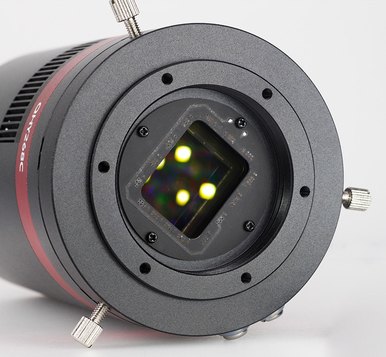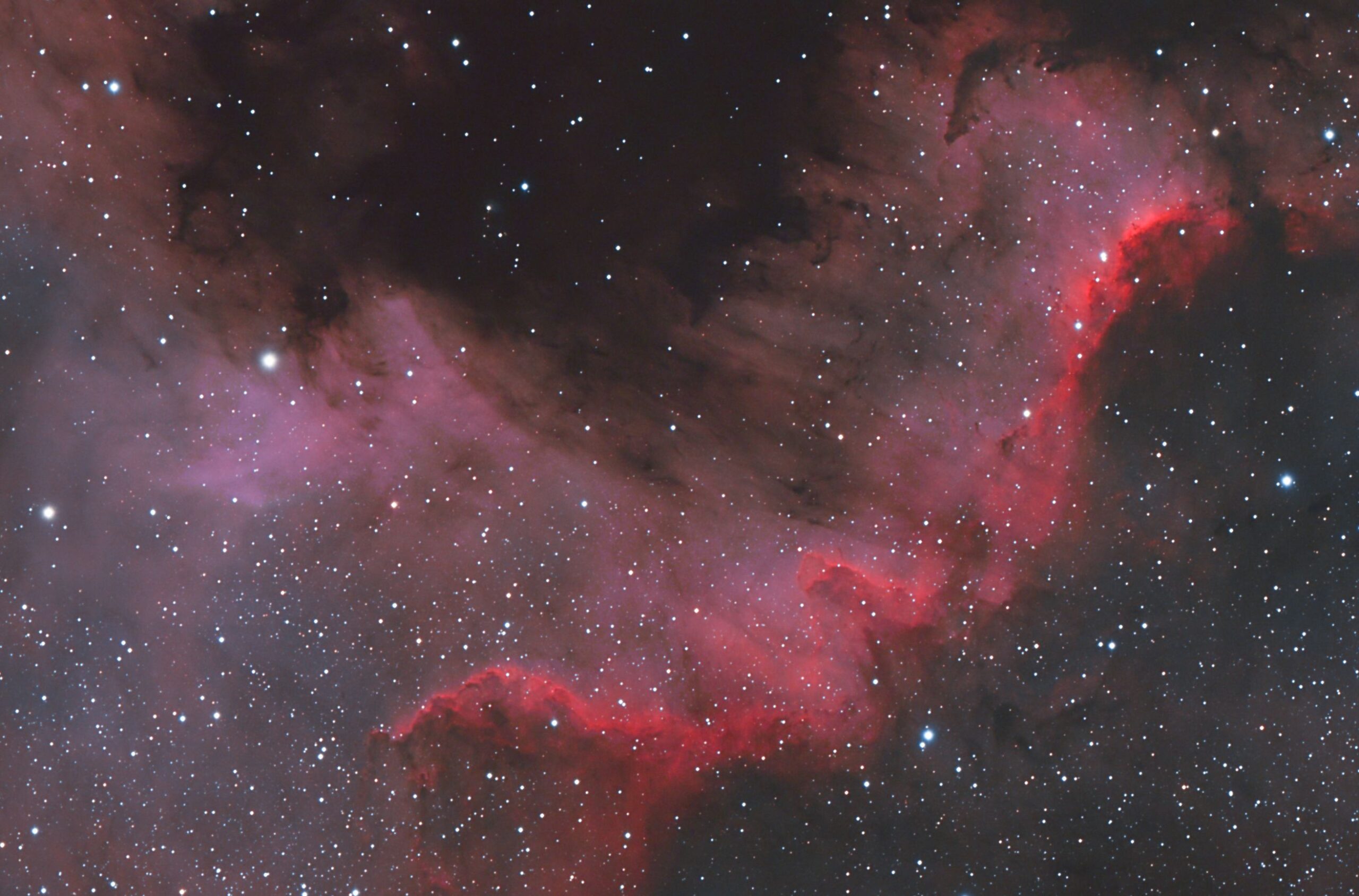No products in the cart.
In June 2020 I pointed the Skywatcher Esprit 100 and new QHY268C camera at the Cygnus Wall for 5 nights. We had a run of clear nights in a row and it was also around new Moon which made it even better. I was able to get 23 hours total data. This is what I captured!
This is a bright wall of interstellar gas. Stars are forming in this ridge of emission known as the Cygnus Wall. It is part of a larger emission nebula (NGC 7000) also known as the The North America Nebula.
 The camera I used to take this image is the QHY268C. A new breed of cooled cmos camera from QHYCCD. It’s a back-illuminated, 16bit, 26-megapixel high resolution deep sky object imaging camera. It provides the highest resolution greyscale, using the Sony IMX571 sensor with a small pixel size of just 3.76um. Combined with low read noise and zero amp glow this is an amazing camera to image with.
The camera I used to take this image is the QHY268C. A new breed of cooled cmos camera from QHYCCD. It’s a back-illuminated, 16bit, 26-megapixel high resolution deep sky object imaging camera. It provides the highest resolution greyscale, using the Sony IMX571 sensor with a small pixel size of just 3.76um. Combined with low read noise and zero amp glow this is an amazing camera to image with.
The data obtained with the QHY268C is high resolution and clean with little noise. The subtle details its able to capture are incredible. This image of the Cygnus Wall has not been drizzled and yet there is so much detail to be seen, even when zooming in.
The QHY268C is ideal for both long exposure imaging and also short exposures, It has three different capture modes (photographic, high gain and extended full well) along with a 2gb DDR3 memory buffer. This cooled cmos camera offers much more sensitivity and flexibility.
The QHY268C is hard to beat in terms of features and price. Its cost is on par with competing cameras and its quality design and specifications are making it a real winner. Using this cooled cmos camera has really had me think about how the CCD era is just about over. And I own a high end CCD monochrome camera which I’ve taken many images with but I have to say I’m really impressed with the OSC QHY268C and its image quality being better than my mono CCD.
 For this Cygnus Wall image I created a second image without the stars. I used the StarNet++ tool for Pixinsight to remove the stars. It leaves only the nebulousity and dark dust, giving it an interesting look. I find the starless image a little more 3D, do you?
For this Cygnus Wall image I created a second image without the stars. I used the StarNet++ tool for Pixinsight to remove the stars. It leaves only the nebulousity and dark dust, giving it an interesting look. I find the starless image a little more 3D, do you?
A different approach (below) to this data was taken when I experimented (in a way never done before) with using the Optolong L-eNhance data obtained with the QHY268C camera. I processed it as a SHO (Hubble Palette) image by assigning the split R-G-B channels to the SII, Ha and OIII wavelengths respectively. The L-eNhance filter is capturing Ha and OIII with some Hb. There is no SII specifically of course but the end image result was quite surprising and impressive as I did not know what to expect when trying this new technique.
You can watch my video of how I did this on Youtube >>> https://youtu.be/E5V1tZ3QlYY
Which version of this image do you prefer? What do you think about the QHY268C camera? Leave a comment below for me!
Technical:
23 hours total
Skywatcher Esprit 100 F5.5 Triplet Refractor http://bit.ly/36w1F7Y
QHY268C cooled cmos camera, 26mp https://bit.ly/37OeYS5
Optolong L-eNhance filter http://bit.ly/32a9Gfu
Optolong L-pro filter http://bit.ly/32a9Gfu
EQ6 Skywatcher mount ( https://bit.ly/2C9lap1 )
Acquisition: N.I.N.A / PHD2 for autoguiding
Processing: Pixinsight

My story began more than 40 years ago looking up at the Moon with a small telescope my Father had. Encouraged by my parents, who bought me my very own telescope, a 4.5″ reflector, I began to explore the night sky from my family home backyard. Today I do astrophotography from my home in Kitchener, Ontario and also with remote telescopes located in New Mexico and Australia. Some of my images have won awards and have been featured online and in magazines.




Leave a comment...